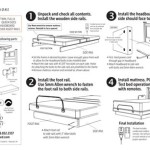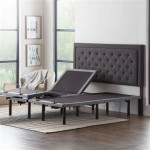How to Use a Bed Wedge
A bed wedge is a triangular-shaped cushion designed to elevate the upper body while lying in bed. It can be a helpful tool for various health conditions and personal preferences, offering a range of benefits. This comprehensive guide will explain how to use a bed wedge effectively, highlighting its potential applications and considerations for optimal use.
Understanding the Purpose of a Bed Wedge
Bed wedges come in various sizes, materials, and firmness levels. Their primary purpose is to provide an inclined surface for the upper body, which can improve comfort and support in a variety of situations. Some common reasons people use bed wedges include:
- Relieving Acid Reflux: By elevating the upper body, a bed wedge helps prevent stomach acid from flowing back into the esophagus, reducing heartburn and acid reflux symptoms.
- Improving Breathing: For individuals with respiratory conditions like asthma or COPD, using a bed wedge can ease breathing by opening up the airways.
- Reducing Back Pain: By supporting the spine and reducing pressure points, a bed wedge can offer relief from back pain, especially for people with lower back issues.
- Improving Circulation: Elevating the legs with a bed wedge can promote blood flow and reduce swelling in the lower extremities.
- Enhancing Post-Surgery Recovery: After certain surgeries involving the abdomen or lungs, a bed wedge can help with recovery by promoting drainage and reducing pressure on the surgical site.
- Providing Comfort and Support: Bed wedges can simply enhance comfort and support for those who prefer to sleep in a slightly elevated position or have difficulty finding a comfortable sleeping position.
Choosing the Right Bed Wedge
The ideal bed wedge for you will depend on your specific needs and preferences. Here are some key factors to consider when selecting a bed wedge:
- Size: Choose a wedge that is long enough to support your entire upper body comfortably. Consider the length of your torso and the desired level of elevation.
- Angle: The angle of the wedge determines the level of elevation. A higher angle provides greater elevation, which may be beneficial for certain conditions but can also feel uncomfortable.
- Material: Bed wedges are available in a variety of materials, including memory foam, latex, and cotton. Consider your comfort preferences, desired firmness, and any allergies or sensitivities.
- Cover: The cover of the bed wedge should be washable and comfortable. Look for a material that breathes well and is moisture-wicking, especially if you tend to sweat at night.
Using a Bed Wedge Safely and Effectively
Once you have chosen a bed wedge, it's crucial to use it safely and effectively. Here are some tips to maximize its benefits:
- Start Gradually: Begin with a lower angle and gradually increase it as you become accustomed to the elevation.
- Use a Pillow: Place a pillow behind your head and neck to support your spine and prevent strain.
- Maintain a Comfortable Position: Adjust the position of your legs and knees to ensure comfortable circulation.
- Listen to Your Body: If you experience any discomfort or pain, stop using the bed wedge and consult with your doctor.
- Proper Cleaning: Follow the manufacturer's instructions for cleaning and maintaining your bed wedge.
While bed wedges can be helpful tools, it's essential to consult with a healthcare professional before using one for medical purposes. They can assess your specific needs and provide personalized advice on the best approach for your situation.

How To Use A Wedge Pillow Benefits Mattress Phd

Adjustable Wedge Pillow Sleep Number

Manage Acid Reflux More Ezsleep Wedge Equanimo

How To Use A Wedge Pillow Bed Benefits

How To Use A Wedge Pillow Amerisleep

How To Use The Bed Wedge

A Wedge Pillow For Back Pain And Some Other Tips Blog

Wedge Pillow Bed

Putnam Bed Wedge For Acid Reflux Prevention
Related Posts







